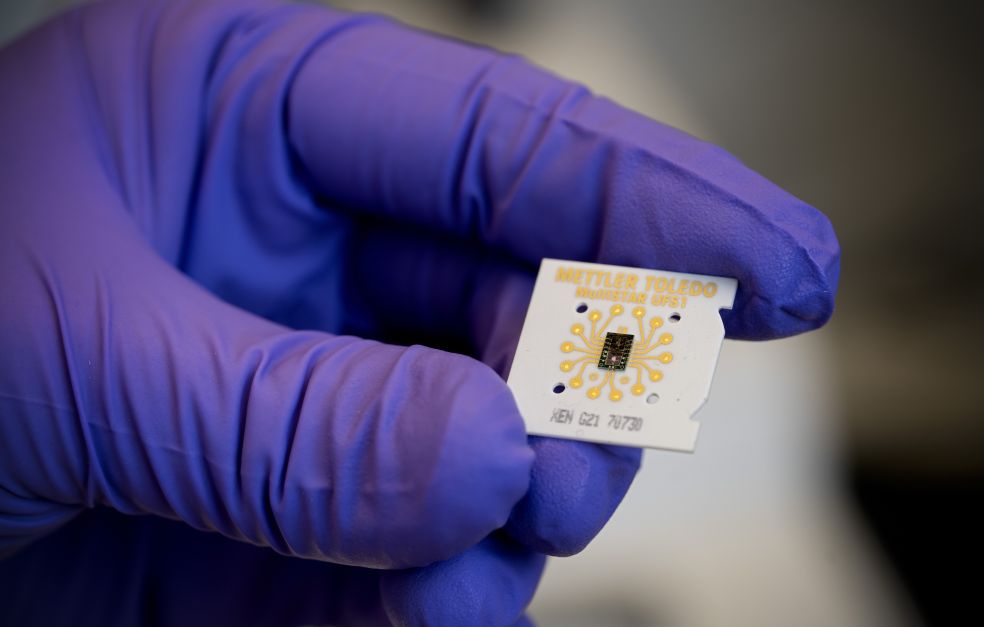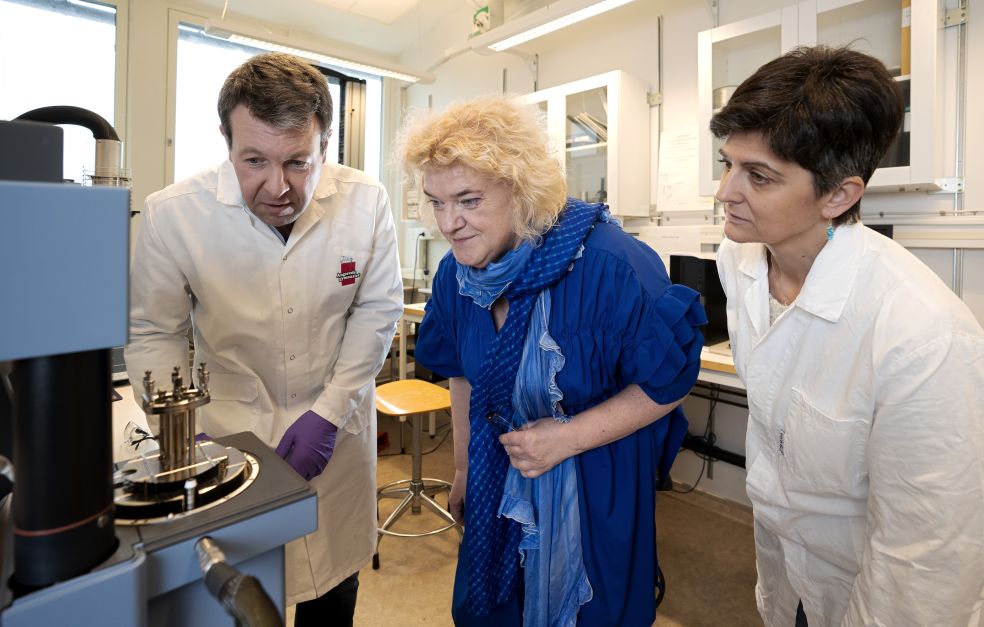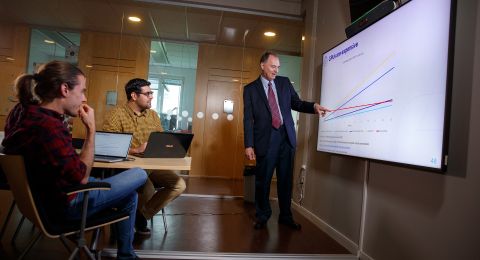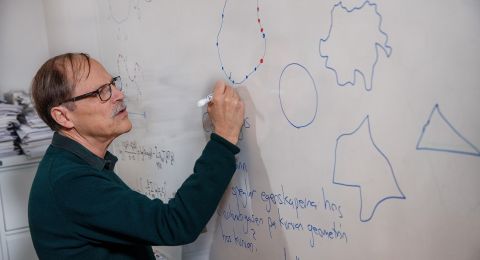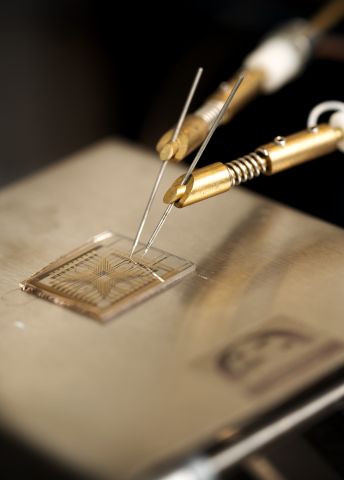
Project Grant 2022
Stable doping of organic semiconductors
Principal investigator:
Christian Müller, Professor
Co-investigators:
Chalmers University of Technology
Anna Martinelli
Eva Olsson
Linköping University
Simone Fabiano
Mats Fahlman
Institution:
Chalmers University of Technology
Grant in SEK:
SEK 27 million over five years
Semiconductors – materials whose conductivity can be controlled – are a central feature of modern electronics. The most common semiconductors are compounds of silicon or germanium. But organic semiconductors have gained ground in recent years. These may be dyestuffs or polymers that can become conductive in the right circumstances. OLED screens are one example, with the letter “O” standing for organic. Organic semiconductors have a number of advantages over traditional ones. The materials are easy to work with and modify, and their manufacture requires less energy, and would be more environmentally friendly.
“There are endless possibilities for synthesizing organic semiconductors possessing different optical, electrical and chemical properties. Besides, unlike silicon, for example, they’re good at conducting both electrons and ions. Since our own bodies use both these processes, this is a fantastic way of combining electronic and biological systems,” says Christian Müller.
He is Professor of Polymer Technology at Chalmers University of Technology in Gothenburg. Funded by Knut and Alice Wallenberg Foundation, he is heading a project in which researchers will be trying to find new ways of making organic semiconductors.
Stability and malleability essential
Stability is currently a major challenge. It must be possible to separate the molecules of semiconductors so the material can be designed as desired. They then need to be “locked in place” in relation to each other once they have been incorporated in electronics of some kind, to ensure stability and reliability.
“They can be likened to medicines. A tablet needs to be stable for many years at the pharmacy, but dissolve as soon as we take it. We need to achieve the same process, albeit in the other direction. Our materials must be able to transition from a state of dissolution to extreme stability,” Müller explains.
So far, the most commercially successful approach has been to fabricate organic semiconductors by vaporizing molecules, which solidify to form a stable, glass-like film. In parallel, scientists are experimenting with another method in which the molecules are instead mixed with a solvent to form a sort of ink that can then be printed. The fabrication process is simpler, but the printed film is less stable than its vaporized counterpart.
In the current project, researchers at Chalmers and Linköping University want to find ways of improving the ability of the molecular mixture to form the desired glass-like structure. This is because glass-like materials remain stable for a long time. Most solid-state materials contain tiny crystals – atoms or molecules in fixed structures – and can change shape over time, but solid-phase glass has a disordered structure that changes not at all or only very slowly over many years.
A new tool for creating electronics
The researchers are basing their work on an earlier project on glass-forming materials. That project was based on the fundamental concept of entropy – the phenomenon that all natural systems attempt to attain a state of maximum disorder. Might it be possible to force a material into that state?
“We wondered whether it would be possible to create extreme disorder, thereby producing a material that does not change,” recalls Müller.
It worked. The researchers gradually mixed more and more different molecules into an organic material, the result being a disordered structure that was completely stable. They had created a super-stable glass, in which the molecules were not so tightly bound to each other that they could not be dissolved and the material reused.
Among other things, the researchers now intend to link the findings to different methods of doping, whereby a semiconductor is given desired electrical properties by adding small quantities of various substances to it.
“Now we have learnt that we can achieve stability by creating disorder, we have a tool for improving electronic materials. It’s really exciting,” Müller enthuses.
Sustainability right from the outset
Lastly, the project aims to find out whether it is actually possible to use the new methods to create functioning and sustainable electronics. The researchers will begin by working with thermoelectric components, which convert heat into electricity, and electrochemical transistors, which can act as sensors or control elements inside a living body or plant.
The research teams in the project complement each other. One team with expertise in electron microscopy is tracking the doping molecules and monitoring their movements within the semiconductors. Another is analyzing glass formation using infrared spectroscopy and other methods; a third group is examining changes in the energy states of the materials using synchrotron light at the MAX IV research facility.
When the researchers planned the project they took pains to incorporate sustainability aspects right from outset. Müller explains:
“It’s been the case for many years, both in academic research and industry, that problems arise, and a solution must be found, and then there’s a new problem and a new solution is needed…We hope instead to solve multiple problems right from the outset.”
Text Lisa Kirsebom
Translation Maxwell Arding
Photo Johan Wingborg

